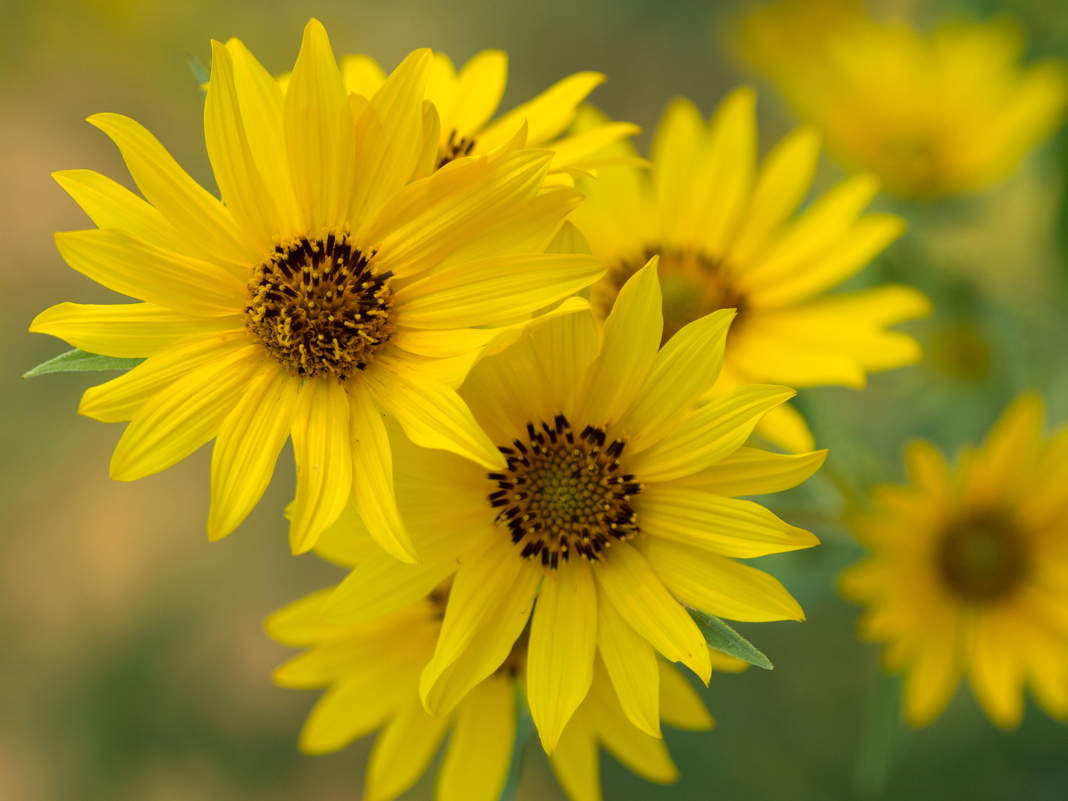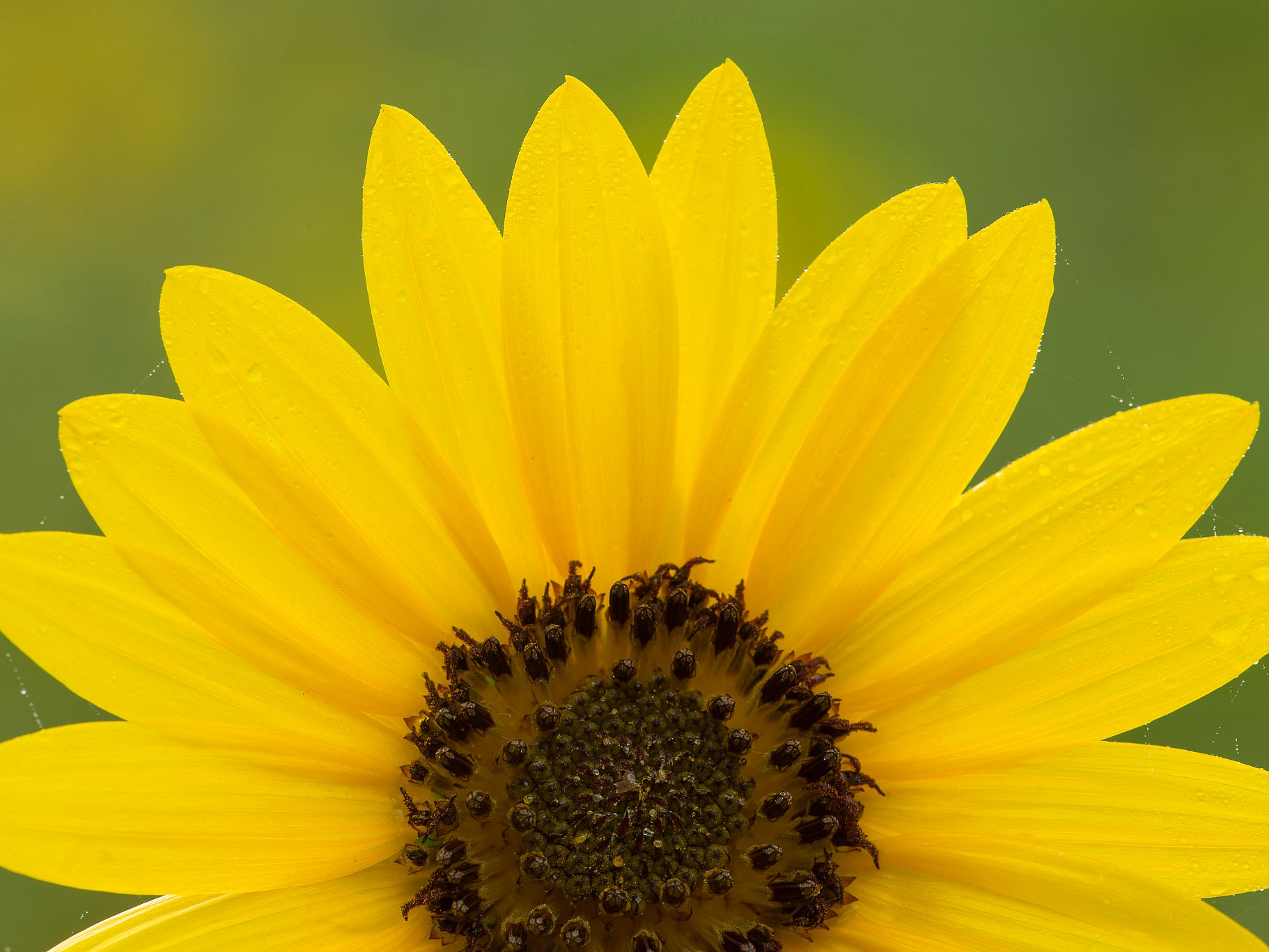For the Love of Sunflowers

Maximilian sunflower (Helianthus maximiliani) PHOTO Wildflower Center
In a time filled with so much uncertainty, I’m sure most gardeners agree that the steady, cyclical shifts of nature and our gardens provide much needed reassurance and grounding. As the speckled pinks, blues and purples of spring meld into a sun-soaked yellow summer, plants assure us time marches on. During our brutal Central Texas summers and into fall, sunflowers are often a highlight. Especially now, their dependable resilience and beauty stand out amid a changing world. This sentiment, shared by much of the staff at the Wildflower Center, led to the sunflower being named our 2021 Wildflower of the Year.
As a horticulturist at the Center, native Maximilian sunflower (Helianthus maximiliani) has quickly become my favorite. The multiple golden-yellow sunflower heads lining the stem contrast well against the narrow, gray-green foliage. The tall, unbranched stalk lends itself to swaying gently with the wind. Native to the tallgrass prairie, Maximilian sunflower shines when planted alongside native clump grasses, such as big muhly (Muhlenbergia lindheimeri). I find that the most pleasing and successful garden beds allow plants to play the role they would naturally fill in the wild. Though it prefers moist soil, Maximilian sunflower, is extremely drought tolerant and actually grows tallest and strongest in unamended, less nutrient-dense soils.
Maximilian sunflower is one of over 20 species of sunflowers native to Texas. With so many to choose from, resources such as the Center’s Native Plants of North America database are essential. Its filters can narrow the search by a number of options: state, soil conditions, light requirements, etc. For example, the swamp sunflower (Helianthus angustifolius) and muck sunflower (Helianthus simulans) thrive in wet soil conditions; with this in mind, plantings in a boggy bed adjacent to a pond, or in swale or raingarden would do quite well. For interesting foliage, the silverleaf sunflower (Helianthus argophyllus) or sawtooth sunflower (Helianthus grosseserratus) both provide unique yet beautiful additions to a garden bed. And of course, there is the classic common annual sunflower (Helianthus annuus). With its attractive, iconic flower heads, branching growth habit and broad, dark green leaves, it is the emblematic species so widely loved.

Common sunflower (Helianthus annuus) PHOTO Wildflower Center
As the name suggests, sunflowers are a sun-loving plant, although some species will tolerate more shade than others. In order to maximize the germination of seeds, a cold stratification period is recommended. To accomplish this, sow seed in early winter (mimicking the natural cycle of seed dispersal). Once established, perennial sunflowers, such as Maximilian sunflower, spread by rhizomes underground. In late fall to early spring, cut dormant plants down to the ground; then dig up rhizomes, separate them, and replant them to fill in holes or in a new garden altogether. Planted in fall, rhizomes will benefit from the late fall and winter rains and, depending on the year, may require only an initial watering when planted to thrive. Sunflowers are a versatile plant able to fill many garden design roles. They create a magnificent border at the back of a bed, look great planted along a fence, act as an effective hedge, or a favorite of mine — planted in between tall clump grasses.
Sunflowers, along with other members of Asteraceae, have a composite flower head. This means that each large (or small, in some species) floral head is not just one flower, but in fact made up of many — sometimes hundreds — of tiny flowers called florets. The size and shape of sunflower florets make them accessible to a wide range of pollinators. Additionally, the leaves of sunflowers are beneficial in providing larval food for several species of caterpillar. This combination makes sunflowers a pollinator super plant. And they support a wide array of wildlife beyond pollinators: Grain-eating birds, such as finches, feed on the seeds, and the tall plants provide shelter for brooding birds and small mammals. With all of these advantages in mind, not to forget the long-lasting exquisite blooms, it’s easy to see that sunflowers are a must-have for your native plant garden.
This article was originally written for the May/June 2021 issue of Texas Gardener magazine.

